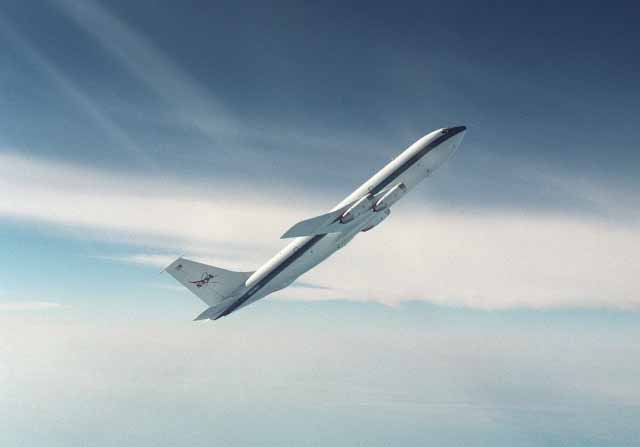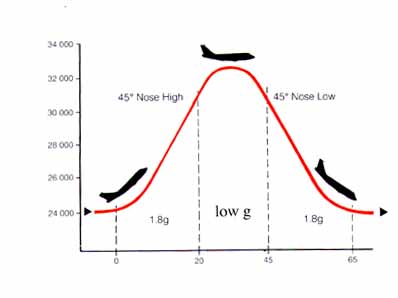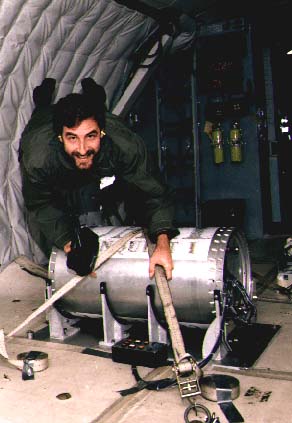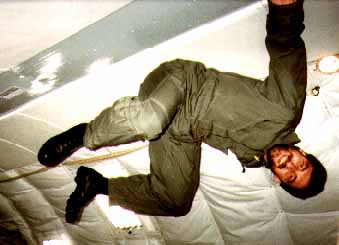

Experiments on the KC-135 Airplane


How does the KC-135 provide weightlessness?
The KC-135 flies in a parabolic flight path, shown below, like a giant roller coaster. As the plane goes over the top of the parabola,
the plane and its contents experience approximately 20 seconds of "microgravity" (a misnomer, because there is still gravity) at a level of about 0.01 g.
Other methods to achieve weightlessness are drop towers, sounding rockets and orbital flights.



Above you see J. Pojman enjoying weightless as he floats above our microgravity
reactor, actually part of the Conquest I rocket we flew in April, 1996.
Effect of Orientation on descending fronts.
In ground based research we discovered that descending fronts propagate
faster if the tube is tilted. This movie shows a front of triethylene glycol
dimethacrylate/benzoyl peroxide propagating in a tube tilted at 60 degrees.
Watch the small particle of charcoal under the front as it moves to the
right. When it encounters a bubble it is caught in localized convection
probably caused by surface-tension induced flows.
Quicktime movie demonstrating these surface-tension
induced flows
MPEG movie demonstrating these surface-tension induced
flows
To test if the increase in front velocity was only due to buoyancy-driven
convection or to an increase in the front surface area (the front is an
ellipse instead of a circle), we performed the experiment in June 1997 on
NASA's KC-135 aircraft that performs parabolic flights to allow 20 seconds
of 0.01 g followed by about a minute of gut-wrenching 1.8 g.
Notice in this movie that the front that is tilted at 45 degrees to the
vertical (the left of the image is the top) slows down and straightens up.
When the high g commences, the front tilts again, proving that convection
is the cause of the faster fronts.
Quicktime movie
mpeg version
Here are some movies of the man himself experiencing low
gravity conditions.
Quicktime movie of convection free Pojman
MPEG movie of the same phenomena
Return to: